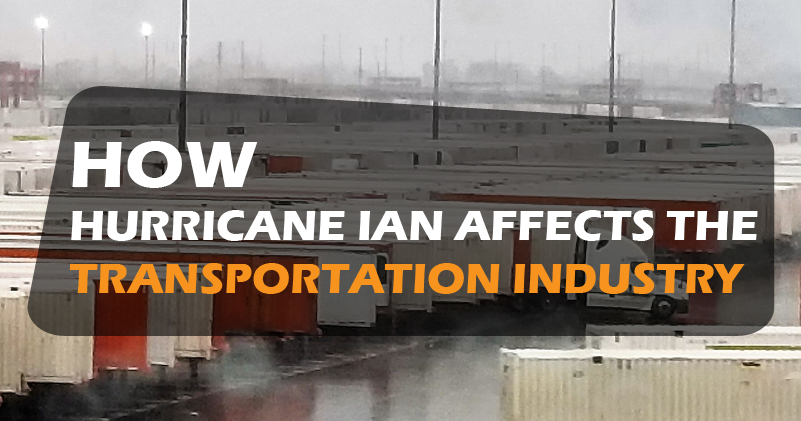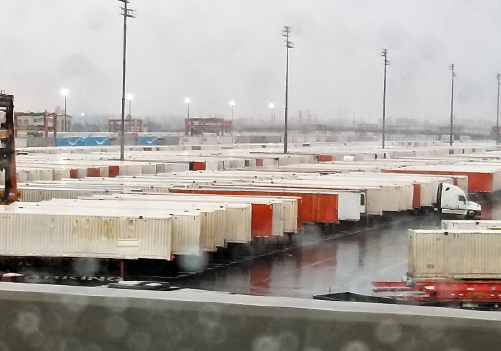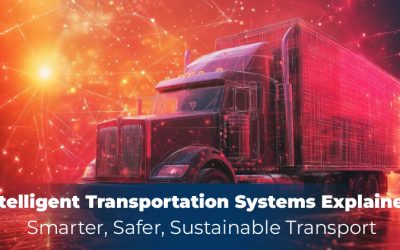
Hurricane Ian has wreaked havoc on the Caribbean and US this season. As of October 4, it had been responsible for at least 42 deaths and caused billions in damage across the region. This natural disaster will affect your day-to-day operations if you work in the transportation industry.
Hurricanes have a widespread impact in any area that relies on a transportation network. As a result, businesses may have to alter staffing or adjust their delivery schedules until conditions return to normal. We’ve outlined some brief details below to get you up to speed on how Hurricane Ian affected the transportation industry. Keep reading to learn more!
Transportation Disruptions
When a natural disaster hits, transportation systems are usually among the first to be affected. This is especially true for ports, airports, and highways. Hurricanes often disrupt maritime travel while also impacting air travel severely. Traffic accidents are also more common during hurricane season, as some travel during dangerous weather conditions. Check your state’s weather forecast before traveling, as extreme weather can affect your route. Hurricane Ian affected the transportation industry in a few different ways. Maritime travel was disrupted in the Caribbean, while air travel severely affected nearby regions.
Delivery delays are being reported by FedEx, UPS, the U.S. Postal Service, and XPO Logistics in the Southeast. Nearly 1,000 ZIP codes, including Tampa and Orlando, were reported by UPS as being impacted by the storm. FedEx published a list of 383 Florida locations on Wednesday, including Tampa, Orlando, and Miami, where Ground services are not yet available. Several Florida communities, including Orlando and Cocoa, had all retail and delivery activities suspended by the Postal Service.
Logistics companies estimate that Florida’s truckload capacity will be disrupted immediately after the disaster. Many carriers will move to transporting needs like water and bringing supplies for cleaning and repairs. Due to power outages or impassable roads at destinations, some freight may need to be held, and many LTL carriers continue to offer little to no service in Florida.
Effects on the Supply Chain
Hurricanes often cause widespread flooding and damage to crops. They can also lead to power outages and disruptions in the transportation network. These types of natural disasters can disrupt the supply chain. Such disruptions can lead to a temporary shortage of agricultural goods.
They can also cause a spike in demand for items like generators, bottled water, and other emergency supplies. If you work in the supply chain, you may need to be more flexible and prepared for disruptions during hurricanes. Also, consider preparing for price fluctuations in commodities and demand for emergency items. In addition to almost 7,000 pharmaceutical and medical device businesses, the hurricane affected nearly 2,800 manufacturing companies in the aerospace technology, automotive components, heavy machinery, chemicals, and plastics sectors.
The hurricane’s path passed close to 4,500 industries, warehouses, and distribution facilities that stock 74,000 parts are ranging from chemicals to electronics. The hurricane might be worth $20 billion to these businesses.
Due to dangerous waters, tons of boats were being kept at their origin and delayed from leaving on time until they were deemed safe. Delta has even canceled air freight operations until the storm passes, leaving tons of cargo parked on port grounds or terminals. All of this affects the transportation industry!
Business Continuity and Recovery
Florida is not seen as a thriving shipping state as California is. Truck drivers, particularly owner-operators, frequently have trouble locating loads on their journey out of the peninsula’s landscape covered in tourist attractions.
Florida’s market imbalance is the primary concern for owner-operators. “Very little freight leaves Florida, especially as you travel further south. Because there are so few opportunities leaving, it’s crucial to price your journey adequately if you’re bringing cargo into central or southern Florida.
It’s a relief that major container ports that were closed last week in anticipation of Hurricane Ian have since reopened and are operating normally. The state’s largest cargo port by volume, the Port of Jacksonville, was closed for the longest. The port shut down Wednesday before Ian landed on the Gulf Coast near Fort Myers and reopened on Saturday. The port is a “top vehicle handling port” on Twitter. The Port of Miami, located about 100 miles southeast of Fort Myers and roughly 100 miles north of Port Tampa Bay, both shut down last Wednesday. The Port of Miami resumed regular business Thursday, while the Port of Tampa Bay reopened on Friday.
Final Words: Stay Safe!
The main takeaway is that the transportation and supply chain sector, which includes manufacturing, production, and warehousing, has been severely impacted by this hurricane. It is still unknown how the storm damage will affect freight efficiency over the following weeks and months. Trucks, rail lines, ocean ports, and airports have all been stopped until conditions improve.
Please don’t hesitate to contact a staff member of TMS-Digital if you have any queries about how your freight can leave Florida or when you can resume normal business operations and are searching for trucking advice in the interim. We would be delighted to speak with you and offer our assistance in any manner we can.










